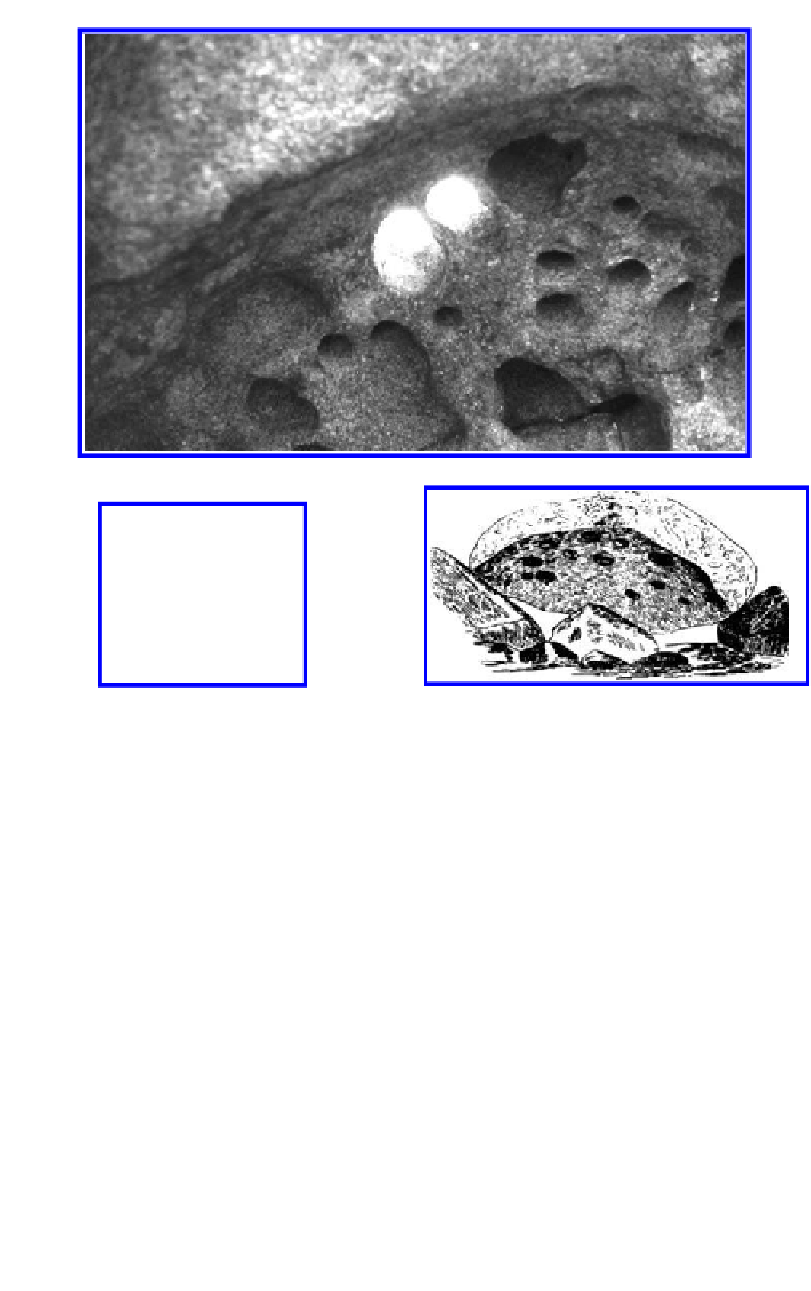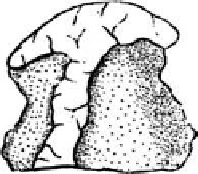Geology Reference
In-Depth Information
(b)
(d)
(c)
Figure 10.2.
(b) Tubular aperture in the outer shell of a tafone from Mount Pindo, Galicia, northwestern
Spain. (c) Tafone sketch from Guadarrama, Madrid, Spain (Casiano de Prado, 1864). (d) Tafone
sketch from Galicia, Spain (Hult, 1888).
10.4
TAFONI
10.4.1
Description
Tafone (plural tafoni) is an Italian word meaning, variously, depending on regional usage, a perfo-
ration or a window. As applied in geomorphology it means a shallow cavern or a hollow partly, and
frequently substantially, enclosed through the preservation of a visor, or hood. Some tafoni are
small (alveoles -see below- a few centimetres wide and high), but some are several metres wide
and of a similar height. The walls of the hollows may be regular, but others are flaked and mamillated,
and some, as mentioned previously, display shallow flutings. Some tafoni are connected to the outside
by breaches or windows in the outer shell of rock (Fig. 10.2a). Some such apertures are tubular (Fig.
10.2b), but others are quite wide and of irregular shape. The partial enclosure of the hollow differen-
tiates it from an alcove (e.g. Fig. 3.7). Large alcoves are called grottes, or, in Australia, shelters, though
these are usually located at the base of cliffs and are called cliff-foot caves.
Tafoni were first described by De Prado (1864) from the Sierra de Guadarrama in central Spain
(Vidal Romaní, 1998 and see fig. 10.2c) and later by Reusch (1883) from Corsica, and by Hult
(1888) in Galicia NW, Spain (Fig. 10.2d), but normally the most known citations are the one
of Penck (1894), of forms he had observed in Corsica (Klaer, 1956). Tafoni are especially well-
developed in granite, where they are commonly found at the margins of sheet structure, beneath
boulders and in the scarp-foot zones of bornhardts
(
Fig. 10.3)
.
Alcoves or shelters lacking visors


